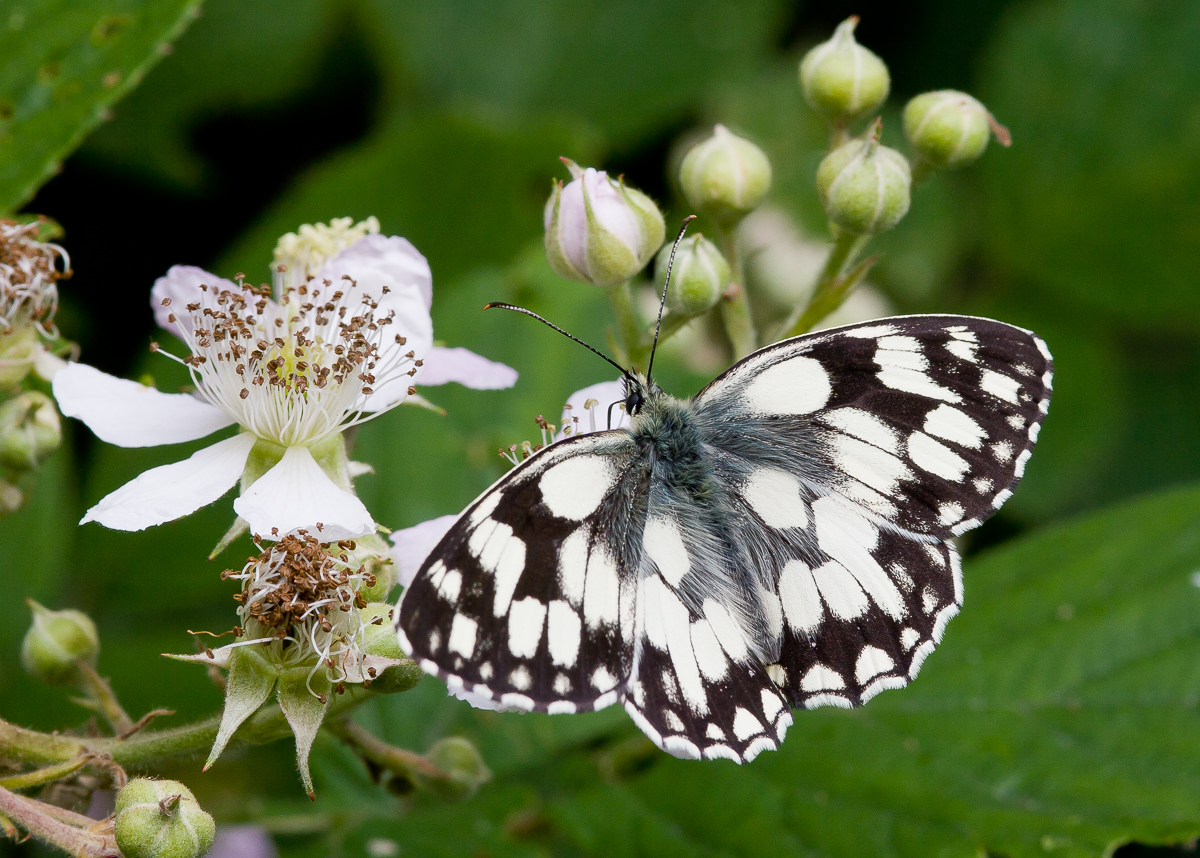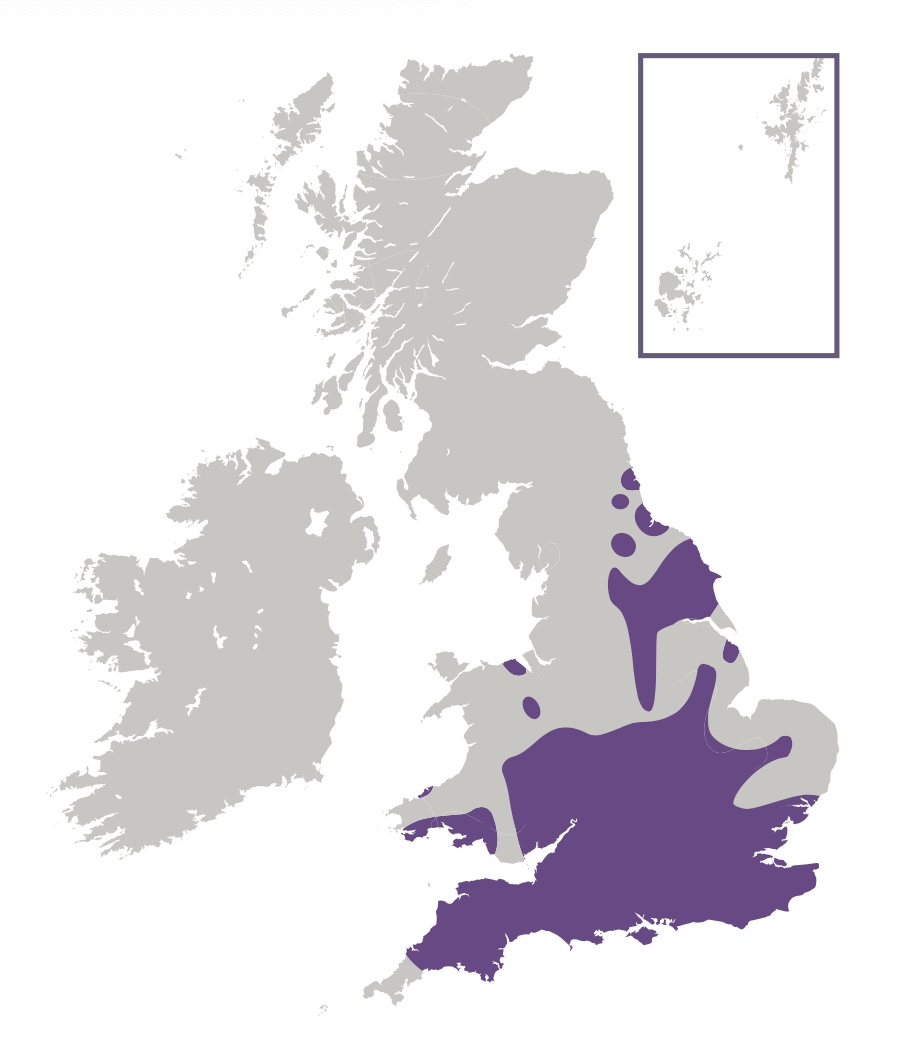
Photo © Peter Eeles
Despite its name, the Marbled White is more closely related to the subfamily known as the "browns" that the "whites". This butterfly is unmistakable, its black and white markings distinguishing it from all other species found in the British Isles. This butterfly is found in distinct and often large colonies, south of a line between Glamorganshire in the west and North-east Yorkshire in the east, although it is not found in much of eastern England. It is absent from Scotland, Ireland and the Isle of Man.
Early morning is a good time to see this species, as it warms up with wings held open absorbing the sun's rays. This species can be quite conspicuous, even from a distance, as it may be the only white object among the grassland. At good sites it is not uncommon at good sites to see a flower head containing several adults all vying for space as they feed. When the weather is dull, and at night, the adults will rest on grass stems, as well as the flowerheads of any of their nectar sources, such as Thistle or Knapweed.
The Marbled White is often found with parasitic red mites, Trombidium breei in particular, attached to its thorax, although such parasitism does not appear to affect the butterfly in any way.

The butterfly is found in unimproved grassland where the grass may grow up to 0.5m tall. The largest colonies are found on downland but even small strips of grassland, such as a road verge, field margins, woodland clearings and disused railway lines can contain smaller colonies.
Adults feed primarily on clovers (Trifolium spp.), knapweeds (Centaurea spp.), thistles (Carduus spp. and Cirsium spp.), Wild Marjoram (Origanum vulgare), Wild Thyme (Thymus drucei) and Yarrow (Achillea millefolium).
The primary larval foodplants are Cock's-foot (Dactylis glomerata), Red Fescue (Festuca rubra), Sheep's-fescue (Festuca ovina), Timothy (Phleum pratense), Tor-grass (Brachypodium rupestre) and Yorkshire-fog (Holcus lanatus).
